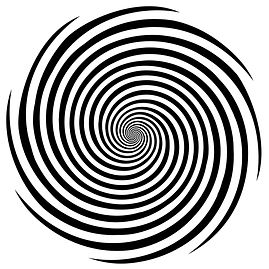
VERTIGO

The best care for vertigo
What is Vertigo?
Vertigo is a common symptom of several diseases. It is characterized by spinning or whirling movement of head.
It is a kind of dizziness due to imbalance of the body or loss of equilibrium. It is a common condition contributing to a major part of the population being admitted in the emergency departments worldwide.
Symptoms
-
Nauseatic feeling
-
Feeling of imbalance while walking or sitting
-
Blurred vision
-
Nystagmus or jerky or abnormal movement of the eyes
-
Headache
-
Excessive sweating
-
Loss of hearing or less hearing
-
Tinnitus or ringing of ears
These above symptoms may be intermittent or continuous and may last for a few minutes or even for hours & also lasts from once to twice to thrice a week. This means that if not taken care of, the attacks might repeat.
Frequency of a Vertigo attack
Vertigo can even occur twice or more than that with in a period of a few days to weeks. An episode might appear twice a week or even twice a month. Some patients may only feel a slight loss of balance whilst others may feel complete imbalance and unsteady all day long or for long periods.
Types of Vertigo
Vertigo is of 2 types:
-
Peripheral vertigo : It occurs due to inner ear causes. The most common cause for this is Benign Paroxysmal Peripheral Vertigo (BPPV), which accounts for 50% of all common types of peripheral vertigo. Any cause of inflammation such as common cold and influenza cause transient vertigo if it involves the inner ear.
-
Central vertigo – It occurs when the underlying cause lies within the central nervous system of the body. It includes the movement illusion which is not so prominent and nausea instead of a typical peripheral vertigo. It can be caused due to hemorrhage or infractions, tumors like vestibular schwannoma or cerebellar tumors.
Causes of Vertigo and Dizziness
The balance of human body is maintained by the inner ear that responds to gravity by sending signals to the brain. It is more common in older people. Vertigo is caused due to damage to the inner ear. The actual cause lies in interference with the normal ion-water homeostasis in the ear that leads to several inner ear diseases. . Some of the causes of vertigo are listed as below.
Benign Paroxysmal Positional Vertigo (BPPV) :
Benign paroxysmal positional vertigo or BPPV is the most common cause of vertigo that occurs due to presence of minute calcium particles known as canaliths in the canals of inner ear. These canaliths cause problem when they enter any of the fluid filled channels in the ear which may occur on sudden movement of head like sudden standing up, turning the head, lifting up the head etc. It is a recurrent condition that may occur in short and tense bouts. It is often accompanied with nausea and vomiting. It is a benign condition that occurs on positional change in the body and sometimes also accompanied with nystagmus.
Vestibular neuronitis :
Vestibular neuronitis is a condition associated with the inflammation in the inner ear due to viral infections like cold and flu. This inflammation affects the nerves that sense the balance of the body thus leading to vertigo. It may last for a few hours to a few weeks.
Labyrinthitis :
Labyrinthitis is the inflammation of the labyrinth which is a delicate network of fluid filled channels in your inner ear and a controller balance and hearing. Due to its inflammation, the signs sent to brain are abnormal and leads to the imbalance of body. It may also be associated with nausea, vomiting or pain in the ear.
Meniere’s disease :
Meniere’s disease is a rare disorder in the inner ear which is caused by the viral or bacterial infection leading to the accumulation of fluid and thus exerting pressure in the ear. It is often associated with tinnitus, aural fullness as well as loss of hearing.
Immune mediated inner ear disease :
Immune mediated inner ear disease is an autoimmune reaction may also lead to damage of ear which further is associated with vertigo, tinnitus and hearing loss.
Migraine headaches :
Migraine headaches are characterized by severe throbbing type of pain in front of or on one side of the head. It is also accompanied with dizziness, nauseatic feeling, vomiting and photophobia.
Diagnostic tests for Vertigo
It is important to diagnose the cause of vertigo, or dizziness, as quickly as possible to rule out serious conditions such as cardiovascular disease, stroke, hemorrhage, or tumor. Diagnosis includes clinical history, physical and neurological examination, blood tests, and imaging tests (e.g., CT scan, MRI scan)
Various tests are conducted for Vertigo. Some tests of vestibular systems such as electronystagmography, postural tests, caloric reflex tests are done in order to determine vertigo. CT scans or MRI scans are also used time to time to diagnose vertigo.
Electrocochleography, pure tone audiometry tests are done as well in order to obtain a detailed condition of the existing attack of vertigo.

